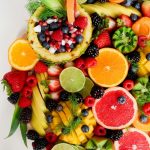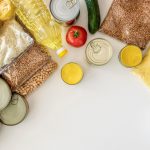By David Blyweiss, M.D., Advanced Natural Wellness
When I was growing up, the only time people talked about fiber was when they were constipated. But most of them never actually tried to eat more of it. Instead, they would just take some castor oil, prune juice or ex-lax until the next time they experienced bowel problems.
But these days we hear a lot about fiber and how good it is for us. It reduces body weight, lowers the risk of cardiovascular disease, helps with diabetes, reduces inflammation and improves immune function.
How can fiber do all of this? After all, isn’t fiber indigestible?
First, let’s get down to basics. Different types of fiber have different roles to play in your health.
You’ve got your insoluble fiber. It passes through the digestive system intact, adding bulk to your stool to help it pass more quickly through the intestines.
One of the most obvious foods that contains insoluble fiber is corn. (It doesn’t take long after you eat it for those bright yellow kernels to show up in your toilet bowel!) So insoluble fibers act as roughage to keep your bowels moving.
Then you have your soluble fiber. This kind of fiber soaks up water as it passes through your intestines and turns into gel. So it slows down digestion. This helps prevents blood sugar spikes and reduces absorption of cholesterol. Plus it keeps you feeling fuller, longer.
But there is a subset of soluble fibers that have an even greater power on your health. They are fermented in your intestines and act as prebiotics.
Fermentable Fibers and Your Gut
All prebiotics are classified as fiber, but not all fibers are prebiotics.
Only fermentable fiber meets the criteria for a prebiotic. To meet this classification, it has to be a “selectively fermented ingredient that results in specific changes in the composition and/or activity of the gastrointestinal microbiota, thus conferring benefit(s) upon host health.”
Fermentable fiber does exactly that. It’s like fertilizer for your gut microbes. And when your gut bugs feed on it, they produce short-chain fatty acids (SCFAs).
This is an important point since lower levels of SCFAs like butyrate, acetate and propionate impair the integrity of the intestinal barrier lining. That’s because, when the gut microbes are starved of fermentable fiber, they have to look for another food source. Some of them die. But others start feeding on the mucosal barrier.
When this occurs, it allows bacteria, toxins, toxicants, previously tolerated foods and other exogenous antigenic protein material to enter your bloodstream. This, in turn, causes your immune system to go into attack mode.
So you want your gut microbes to produce more SCFAs. They are a primary energy source for cells of the colon’s lining and help to strengthen the intestinal barrier. They also have a positive impact on immune response, lipid profile, blood sugar, bone health, mineral absorption, bowel function and weight.
Some fibrous foods that are especially good at promoting SCFA producing bacteria include lentils, chickpeas, kidney beans, asparagus, Jerusalem artichokes (sunchokes), garlic, onions, cabbage and both snow and green peas.
Fruits like bananas, grapefruit, apples and nectarines also contain fermentable fibers. And then you have almonds, pistachios, cashews and other nuts. Grains, too. But I recommended sticking with gluten-free grains such as millet, quinoa and buckwheat.
Where do Probiotics Come In?
People often get confused over the difference between prebiotics and probiotics.
Probiotics increase the number of healthy bugs in your gut. Prebiotics feed the bugs so that they can grow and flourish.
Eating fermented foods is a great way to boost the population of good microbes. And it’s interesting that fermented foods have been around before we even knew they were good for us. I highly recommend adding more of them to your diet. They not only populate your gut microbiome, they also help produce more SCFAs. So they perform double-duty.
If you’re not a fan of some of the fermented foods available, you can always buy a probiotic formula. Look for one that includes a prebiotic and multiple strains of friendly bacteria. The higher the colony count and number of strains, the better off you will be.
In the meantime, start adding a wide variety high fiber plant-based foods to your meals. Soluble, insoluble, fermentable… they are all good for you in their own way.
SOURCES:
Slavin J. Fiber and prebiotics: mechanisms and health benefits. Nutrients. 2013;5(4):1417-1435.
Davani-Davari D, Negahdaripour M, Karimzadeh I, et al. Prebiotics: Definition, Types, Sources, Mechanisms, and Clinical Applications. Foods. 2019;8(3):92.
Cunningham M, Azcarate-Peril MA, Barnard A, Benoit V, Grimaldi R, Guyonnet D, Holscher HD, Hunter K, Manurung S, Obis D, Petrova MI, Steinert RE, Swanson KS, van Sinderen D, Vulevic J, Gibson GR. Shaping the Future of Probiotics and Prebiotics. Trends Microbiol. 2021 Aug;29(8):667-685. Brownawell AM, Caers W, Gibson GR, Kendall CW, Lewis KD, Ringel Y, Slavin JL. Prebiotics and the health benefits of fiber: current regulatory status, future research, and goals. J Nutr. 2012 May;142(5):962-74.




